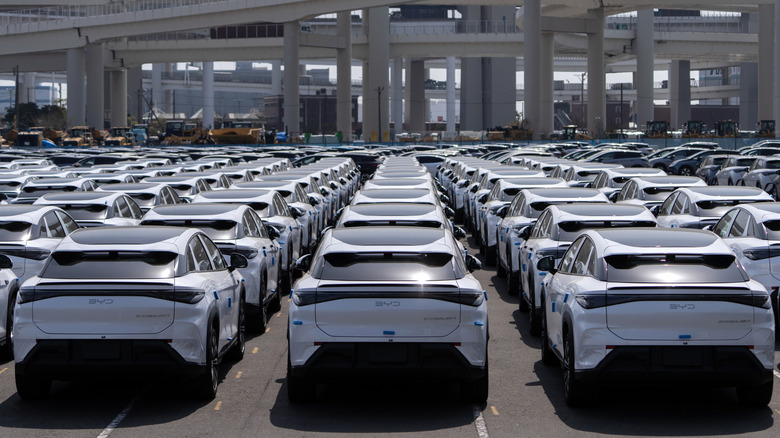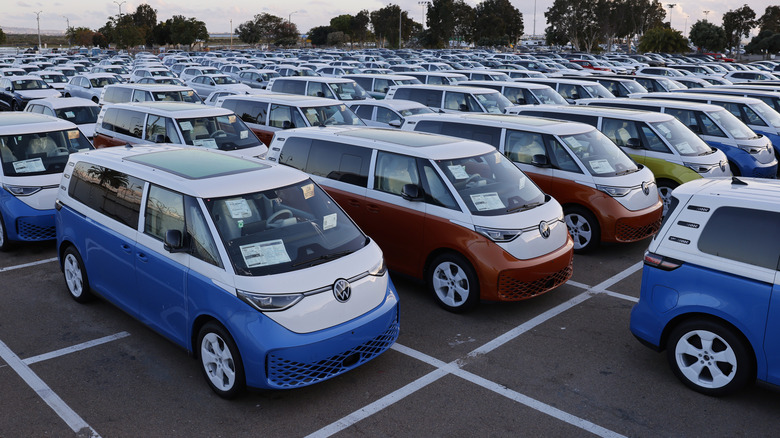Do you like competition? Do you want cool cars with cool features? Do you have fond memories of a German, Japanese, South Korean, British, Swedish, or some other delightful vehicle sold in America that originated in another land? Then you should be jonesing for Chinese cars to arrive in the USA as soon as is reasonably possible.
Okay, sure, those on-again, off-again tariffs might cause some issues. Not to mention the rabidly protectionist nature of the current political regime in Washington. But anyone who digs cars has to be curious about these groovy new Chinese rides, especially the EVs, that we are increasingly spotting thanks to our gloriously connected digital world. Envy is a real thing, and honestly all the other automakers currently doing business in the U.S. would benefit from the arrival of Chinese cars. History has taught us that competition improves everything for everybody.
Some fear this prospect. CarBuzz, citing Kerrigan Advisors’ third-annual 2025 OEM Survey, reports that 76% of auto executives think Chinese cars will eventually come to the U.S., but 70% also think that when the Chinese brands arrive, they’ll chew into those execs’ market share.
The Chinese auto invasion is overstated
CarBuzz calls this threat an “invasion,” but we might want to label that an overstatement. We aren’t living in the 1980s, when Japanese carmakers arrived in the U.S. in earnest and began to decisively disrupt the lock that the Detroit Big Three had previously held on the market. General Motors, Ford, and Chrysler at the time had the onerous task of defending all that market share they had taken for granted. They were literally ripe for the taking.
In 2025, U.S. market share has settled into an almost calcified state. It’s brutally difficult for an automaker to steal even a point of share, and this situation guides a lot of business planning. It’s been more than a decade since GM staked out market share objectives that were significantly higher than its current 17%. For today’s car companies, profitability is the name of the game, not outselling the other guy.
When Chinese brands are finally permitted to crack into the U.S. they will confront a stark reality: coming to America is one thing, while actually making it in America is another.
Don’t forget about Volkswagen
For the sake of argument, let’s forget about the current situation with tariffs and pretend that we are in the pre-Trump 2.0 era and free trade was something America still valued. The best case-in-point of how dang difficult it is to make a dent in the U.S. market is Volkswagen. The global colossus has been trying for almost two decades to garner a share that’s higher than the mid-single digits. VW has failed, despite having a massively well-known brand since the 1960s: current share stands at a meager 4%. I don’t want to think about the gajillions that Volkswagen has by now spent on this undertaking.
And gajillions it certainly is. In fact, if Chinese carmakers were to arrive in force, they’d likely have to spend the most money ever spent to stand up a U.S. presence. Marketing, dealerships, financing, insurance, service, logistics, parts — it goes on and on. Ironically, the Chinese brands are perhaps the only entities left on the planet that actually have, thanks to state support, the resources to even consider this strategy.
So there you have it. Even if the Chinese are coming, American auto execs have nothing to worry about. In fact, if you have a touch of the conspiracy theorist in you — and who doesn’t these days? — then you might right accuse those execs of protesting too much. If, you know, the Chinese cars will crush them, maybe the politicians will believe those frightened execs and continue to deny Americans some of the coolest new vehicles on the road.





